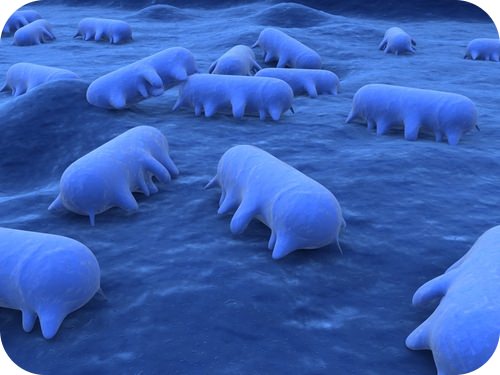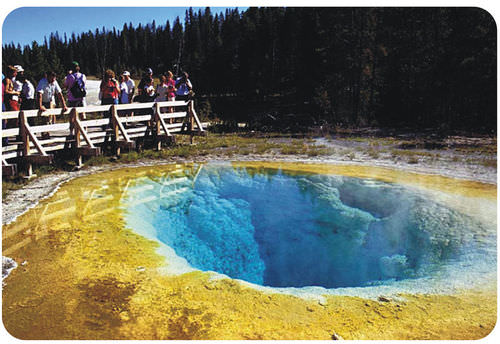7.13: Bacteria Habitat
- Page ID
- 1464
\( \newcommand{\vecs}[1]{\overset { \scriptstyle \rightharpoonup} {\mathbf{#1}} } \)
\( \newcommand{\vecd}[1]{\overset{-\!-\!\rightharpoonup}{\vphantom{a}\smash {#1}}} \)
\( \newcommand{\dsum}{\displaystyle\sum\limits} \)
\( \newcommand{\dint}{\displaystyle\int\limits} \)
\( \newcommand{\dlim}{\displaystyle\lim\limits} \)
\( \newcommand{\id}{\mathrm{id}}\) \( \newcommand{\Span}{\mathrm{span}}\)
( \newcommand{\kernel}{\mathrm{null}\,}\) \( \newcommand{\range}{\mathrm{range}\,}\)
\( \newcommand{\RealPart}{\mathrm{Re}}\) \( \newcommand{\ImaginaryPart}{\mathrm{Im}}\)
\( \newcommand{\Argument}{\mathrm{Arg}}\) \( \newcommand{\norm}[1]{\| #1 \|}\)
\( \newcommand{\inner}[2]{\langle #1, #2 \rangle}\)
\( \newcommand{\Span}{\mathrm{span}}\)
\( \newcommand{\id}{\mathrm{id}}\)
\( \newcommand{\Span}{\mathrm{span}}\)
\( \newcommand{\kernel}{\mathrm{null}\,}\)
\( \newcommand{\range}{\mathrm{range}\,}\)
\( \newcommand{\RealPart}{\mathrm{Re}}\)
\( \newcommand{\ImaginaryPart}{\mathrm{Im}}\)
\( \newcommand{\Argument}{\mathrm{Arg}}\)
\( \newcommand{\norm}[1]{\| #1 \|}\)
\( \newcommand{\inner}[2]{\langle #1, #2 \rangle}\)
\( \newcommand{\Span}{\mathrm{span}}\) \( \newcommand{\AA}{\unicode[.8,0]{x212B}}\)
\( \newcommand{\vectorA}[1]{\vec{#1}} % arrow\)
\( \newcommand{\vectorAt}[1]{\vec{\text{#1}}} % arrow\)
\( \newcommand{\vectorB}[1]{\overset { \scriptstyle \rightharpoonup} {\mathbf{#1}} } \)
\( \newcommand{\vectorC}[1]{\textbf{#1}} \)
\( \newcommand{\vectorD}[1]{\overrightarrow{#1}} \)
\( \newcommand{\vectorDt}[1]{\overrightarrow{\text{#1}}} \)
\( \newcommand{\vectE}[1]{\overset{-\!-\!\rightharpoonup}{\vphantom{a}\smash{\mathbf {#1}}}} \)
\( \newcommand{\vecs}[1]{\overset { \scriptstyle \rightharpoonup} {\mathbf{#1}} } \)
\( \newcommand{\vecd}[1]{\overset{-\!-\!\rightharpoonup}{\vphantom{a}\smash {#1}}} \)
\(\newcommand{\avec}{\mathbf a}\) \(\newcommand{\bvec}{\mathbf b}\) \(\newcommand{\cvec}{\mathbf c}\) \(\newcommand{\dvec}{\mathbf d}\) \(\newcommand{\dtil}{\widetilde{\mathbf d}}\) \(\newcommand{\evec}{\mathbf e}\) \(\newcommand{\fvec}{\mathbf f}\) \(\newcommand{\nvec}{\mathbf n}\) \(\newcommand{\pvec}{\mathbf p}\) \(\newcommand{\qvec}{\mathbf q}\) \(\newcommand{\svec}{\mathbf s}\) \(\newcommand{\tvec}{\mathbf t}\) \(\newcommand{\uvec}{\mathbf u}\) \(\newcommand{\vvec}{\mathbf v}\) \(\newcommand{\wvec}{\mathbf w}\) \(\newcommand{\xvec}{\mathbf x}\) \(\newcommand{\yvec}{\mathbf y}\) \(\newcommand{\zvec}{\mathbf z}\) \(\newcommand{\rvec}{\mathbf r}\) \(\newcommand{\mvec}{\mathbf m}\) \(\newcommand{\zerovec}{\mathbf 0}\) \(\newcommand{\onevec}{\mathbf 1}\) \(\newcommand{\real}{\mathbb R}\) \(\newcommand{\twovec}[2]{\left[\begin{array}{r}#1 \\ #2 \end{array}\right]}\) \(\newcommand{\ctwovec}[2]{\left[\begin{array}{c}#1 \\ #2 \end{array}\right]}\) \(\newcommand{\threevec}[3]{\left[\begin{array}{r}#1 \\ #2 \\ #3 \end{array}\right]}\) \(\newcommand{\cthreevec}[3]{\left[\begin{array}{c}#1 \\ #2 \\ #3 \end{array}\right]}\) \(\newcommand{\fourvec}[4]{\left[\begin{array}{r}#1 \\ #2 \\ #3 \\ #4 \end{array}\right]}\) \(\newcommand{\cfourvec}[4]{\left[\begin{array}{c}#1 \\ #2 \\ #3 \\ #4 \end{array}\right]}\) \(\newcommand{\fivevec}[5]{\left[\begin{array}{r}#1 \\ #2 \\ #3 \\ #4 \\ #5 \\ \end{array}\right]}\) \(\newcommand{\cfivevec}[5]{\left[\begin{array}{c}#1 \\ #2 \\ #3 \\ #4 \\ #5 \\ \end{array}\right]}\) \(\newcommand{\mattwo}[4]{\left[\begin{array}{rr}#1 \amp #2 \\ #3 \amp #4 \\ \end{array}\right]}\) \(\newcommand{\laspan}[1]{\text{Span}\{#1\}}\) \(\newcommand{\bcal}{\cal B}\) \(\newcommand{\ccal}{\cal C}\) \(\newcommand{\scal}{\cal S}\) \(\newcommand{\wcal}{\cal W}\) \(\newcommand{\ecal}{\cal E}\) \(\newcommand{\coords}[2]{\left\{#1\right\}_{#2}}\) \(\newcommand{\gray}[1]{\color{gray}{#1}}\) \(\newcommand{\lgray}[1]{\color{lightgray}{#1}}\) \(\newcommand{\rank}{\operatorname{rank}}\) \(\newcommand{\row}{\text{Row}}\) \(\newcommand{\col}{\text{Col}}\) \(\renewcommand{\row}{\text{Row}}\) \(\newcommand{\nul}{\text{Nul}}\) \(\newcommand{\var}{\text{Var}}\) \(\newcommand{\corr}{\text{corr}}\) \(\newcommand{\len}[1]{\left|#1\right|}\) \(\newcommand{\bbar}{\overline{\bvec}}\) \(\newcommand{\bhat}{\widehat{\bvec}}\) \(\newcommand{\bperp}{\bvec^\perp}\) \(\newcommand{\xhat}{\widehat{\xvec}}\) \(\newcommand{\vhat}{\widehat{\vvec}}\) \(\newcommand{\uhat}{\widehat{\uvec}}\) \(\newcommand{\what}{\widehat{\wvec}}\) \(\newcommand{\Sighat}{\widehat{\Sigma}}\) \(\newcommand{\lt}{<}\) \(\newcommand{\gt}{>}\) \(\newcommand{\amp}{&}\) \(\definecolor{fillinmathshade}{gray}{0.9}\)
Where do you find lots of bacteria?
Practically all surfaces. Bacteria can live and grow in practically any environment. It is this ability that has made bacteria the most numerous species on the planet.
Prokaryote Habitats
Prokaryotes have a wide range of metabolisms, and this determines where they live. They live in a particular habitat because they are able to “eat” whatever is around them. For example, there are bacteria and archaea that break down hydrogen sulfide to produce ATP. Hydrogen sulfide is the gas that gives rotten eggs and sewage their distinctive smell. It is poisonous to animals, but some prokaryotes depend on it for life.
Organisms that are obligate aerobes need oxygen to live. That is, they use oxygen as a terminal electron acceptor while making ATP (see the “Cellular Respiration” concept). Humans are obligate aerobes, and so are Mycobacterium tuberculosis bacteria. M. tuberculosis causes tuberculosis (TB). Obligate aerobes are found only in places with molecular oxygen.
An anaerobic organism is any organism that does not need oxygen for growth and even dies in its presence. Obligate anaerobes will die when exposed to atmospheric levels of oxygen. Clostridium perfringens bacteria, which are commonly found in soil around the world, are obligate anaerobes. Infection of a wound by C. perfringens bacteria causes the disease gas gangrene. Obligate anaerobes use molecules other than oxygen as terminal electron acceptors.
Facultative anaerobic organisms, which are usually prokaryotic, make ATP by aerobic respiration, if oxygen is present, but can also survive without oxygen. In the absence of oxygen they switch to the process of fermentation to make ATP. Fermentation is a type of heterotrophic metabolism that uses organic carbon instead of oxygen as a terminal electron acceptor. Examples of facultative anaerobic bacteria are the Staphylococci, Escherichia coli, Corynebacterium, and Listeria species. Many bacteria that cause human diseases are facultative anaerobic organisms.
Temperature
Like most organisms, prokaryotes live and grow best within certain temperature ranges. Prokaryotes can be classified by their temperature preferences, as shown in the Table below. Which type of prokaryote would you expect to find inside the human body?
Thermophiles live at relatively high temperatures, above 45°C (113°F). Thermophiles are found in geothermally heated regions of the Earth, such as hot springs like the Morning Glory pool in Yellowstone National Park (see Figure below), and deep sea hydrothermal vents. Some thermophiles live in decaying plant matter such as peat bogs and compost. Many thermophiles are archaea. Extreme thermophiles (or hyperthermophiles), live in temperatures hotter than 80°C (176°F).
Psychrophiles grow and reproduce in cold temperatures. The optimal growth temperature of some psychrophiles is 15°C or lower; they cannot grow in temperatures above 20°C. The environments that psychrophiles inhabit are found all over Earth. Psychrophiles live in such places as permafrost soils, deep-ocean waters, Arctic and Antarctic glaciers and snowfields.
Mesophiles grow best in moderate temperature, typically between 25°C and 40°C (77°F and 104°F). Mesophiles are often found living in or on the bodies of humans or other animals. The optimal growth temperature of many pathogenic mesophiles is 37°C (98°F), the normal human body temperature. Mesophilic organisms have important uses in food preparation, including cheese, yogurt, beer and wine.
| Type of Prokaryote | Preferred Temperature | Where It Might Be Found |
|---|---|---|
| Thermophile | above 45°C (113°F) | in compost |
| Mesophile | about 37°C (98°F) | inside animals |
| Psychrophile | below 20°C (68°F) | in the deep ocean |
 The Morning Glory pool of Yellowstone National Park in the United States is a geothermal pool whose waters are heated to high temperatures by magma deep underground. Hyperthermophilic organisms, such as members of the archaeal genus Sulfolobus can live at temperatures between 60°C-80°C and a pH of 3.
The Morning Glory pool of Yellowstone National Park in the United States is a geothermal pool whose waters are heated to high temperatures by magma deep underground. Hyperthermophilic organisms, such as members of the archaeal genus Sulfolobus can live at temperatures between 60°C-80°C and a pH of 3.Summary
- Aerobic prokaryotes live in habitats with oxygen.
- Anaerobic prokaryotes live in habitats without oxygen.
- Prokaryotes may also be adapted to habitats that are hot, moderate, or cold in temperature.
Review
- Why are many prokaryotes adapted for living at the normal internal temperature of the human body.
- Compare psychrophiles to thermophiles.
- Compare obligate aerobes to facultative anaerobes.
| Image | Reference | Attributions |
 |
[Figure 1] | License: CC BY-NC |
 |
[Figure 2] | Credit: Courtesy of the National Park Service;From left to right, top to bottom: NASA; Tom Hilton; PMEL/National Oceanic and Atmospheric Administration; US Geological Survey; NASA; Environmental Protection Agency Source: commons.wikimedia.org/wiki/File:Morning_Glory_Pool.jpg ; From left to right ; top to bottom: http://science.nasa.gov/science-news/science-at-nasa/2004/10sep_radmicrobe/ ; http://www.flickr.com/photos/tomhilton/4689387475/ ; http://www.pmel.noaa.gov/vents/nemo1999/images/bugtem.gif ; http://wwwbrr.cr.usgs.gov/projects/GWC_chemtherm/ ; astrobiology.nasa.gov/articles/is-there-life-on-mars-ask-a-magnet/ ; http://water.epa.gov/polwaste/nps/acid_mne.cfm License: Public Domain; (Left to right, top to bottom) Public Domain; CC BY 2.0; Public Domain; Public Domain; Public Domain; Public Domain |

